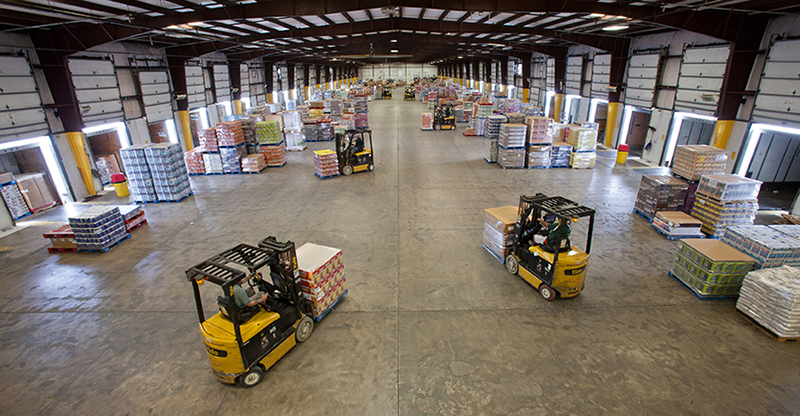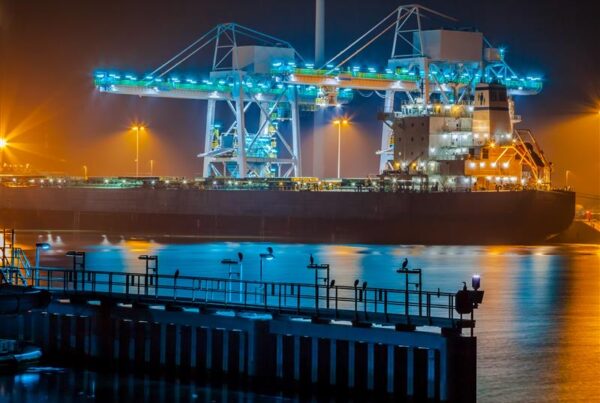Anchoring Success: The Role of Cross Dock Services in Cruise Line Logistics
In the dynamic world of logistics, finding innovative ways to streamline supply chain operations is crucial for businesses to stay competitive. One such method gaining significant traction in recent years is cross-docking. Let’s explore cross-docking, its benefits, how it works, and how it can streamline operations, reduce costs, and improve customer satisfaction. Food and beverage products provide us with a great window into how cross-docking can be beneficial to cruise lines when it comes to efficiently managing their supply chains.
What is Cross-Docking?
Cross-docking is a highly efficient logistical strategy involving the consolidation of products from different suppliers at a specific location, typically facilitated by a third party. It aims to streamline the supply chain process by minimizing handling and storage time. In cross-docking, goods received from various suppliers are quickly sorted and directly transferred to outbound transportation, such as trucks, containers, or vans for rapid delivery, without the need for long-term storage. By eliminating the intermediate step of storing products, cross-docking enhances the speed and agility of the supply chain, ensuring goods reach their intended destination swiftly and efficiently.
How Does Cross-Docking Work?
Cross-docking takes place in specialized facilities called cross-docking centers or terminals. True Grade implemented cross-docking as a key part of its service offerings to cruise lines. True Grade uses food-grade dry, refrigerated, and frozen warehousing, along with a Free-Trade-Zone designation to help cruise lines more effectively use cross-docking to manage food supply chains. Here’s a step-by-step breakdown of how True Grade’s cross-docking services work:
- Receiving: When goods arrive at True Grade’s cross-docking center, they are quickly unloaded from inbound trucks or containers. Each incoming shipment is carefully inspected for accuracy and quality control purposes.
- Sorting and Consolidation: The unloaded products are sorted based on their destination. This step involves grouping products based on similar characteristics, such as description, type, or destination.
- Storage Optimization: While storage time is minimal with cross-docking, there may be cases where products need to be temporarily held until the arrival of outgoing transportation or order confirmation. However, optimization techniques like product grouping, sorting, just-in-time inventory management, tracking, and efficient transportation are employed to minimize storage durations and efficiently allocate space.
- Loading: Once the outbound transportation arrives at True Grade’s cross-docking center, the sorted and consolidated products are immediately loaded onto outbound transportation to continue down the supply chain. This process is carried out swiftly to ensure minimal shipping delays.
- Outbound Shipment: Finally, the loaded trucks leave True Grade’s cross-docking center, heading towards their respective port or destination. As a result of the streamlined process, cruise ships receive their products faster and in fewer shipments, leading to improved order accuracy and delivery time, which drives efficiency.
Benefits of Cross-Docking:
What are the benefits that True Grade cross-docking provides?
- Reduced Inventory Holding Costs: Cross-docking minimizes long-term warehousing needs, resulting in higher product quality, lower storage costs, and happier inventory managers.
- Enhanced Operational Efficiency: Cross-docking optimizes resource utilization, by eliminating unnecessary handling and reducing storage times, cruise lines experience real boosts to loading efficiency.
- Faster Order Fulfillment: With reduced transit times and quicker loading processes, cross-docking enables faster delivery of products directly to the ships, meeting their expectations for prompt and accurate products.
- Improved Supply Chain Visibility: Cross-docking facilitates real-time monitoring of shipments, providing better visibility into the movement of goods and further improving effective supply chain management.
Cross-docking presents a game-changing opportunity for cruise Lines seeking to optimize their F&B supply chains, while reducing costs and making crew members’ jobs easier. By embracing cross-docking and other innovative logistical practices like traceability, cruise lines can achieve more streamlined processes, improved supply chains, and a leg up on their sustainability efforts.
Successful cross-docking requires careful planning, collaboration, the right technology solutions, and above all, the right partner. As logistics continue to evolve, cross-docking remains a key strategy in the quest for a leaner, more responsive supply chain.
To find out more about cross-docking watch this video.







